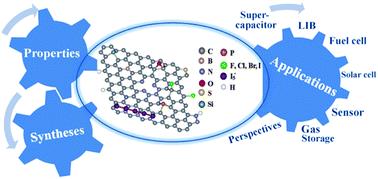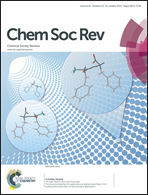Heteroatom-doped graphene materials: syntheses, properties and applications
Abstract
Heteroatom doping can endow graphene with various new or improved electromagnetic, physicochemical, optical, and structural properties. This greatly extends the arsenal of graphene materials and their potential for a spectrum of applications. Considering the latest developments, we comprehensively and critically discuss the syntheses, properties and emerging applications of the growing family of heteroatom-doped graphene materials. The advantages, disadvantages, and preferential doping features of current synthesis approaches are compared, aiming to provide clues for developing new and controllable synthetic routes. We emphasize the distinct properties resulting from various dopants, different doping levels and configurations, and synergistic effects from co-dopants, hoping to assist a better understanding of doped graphene materials. The mechanisms underlying their advantageous uses for energy storage, energy conversion, sensing, and gas storage are highlighted, aiming to stimulate more competent applications.


 Please wait while we load your content...
Please wait while we load your content...